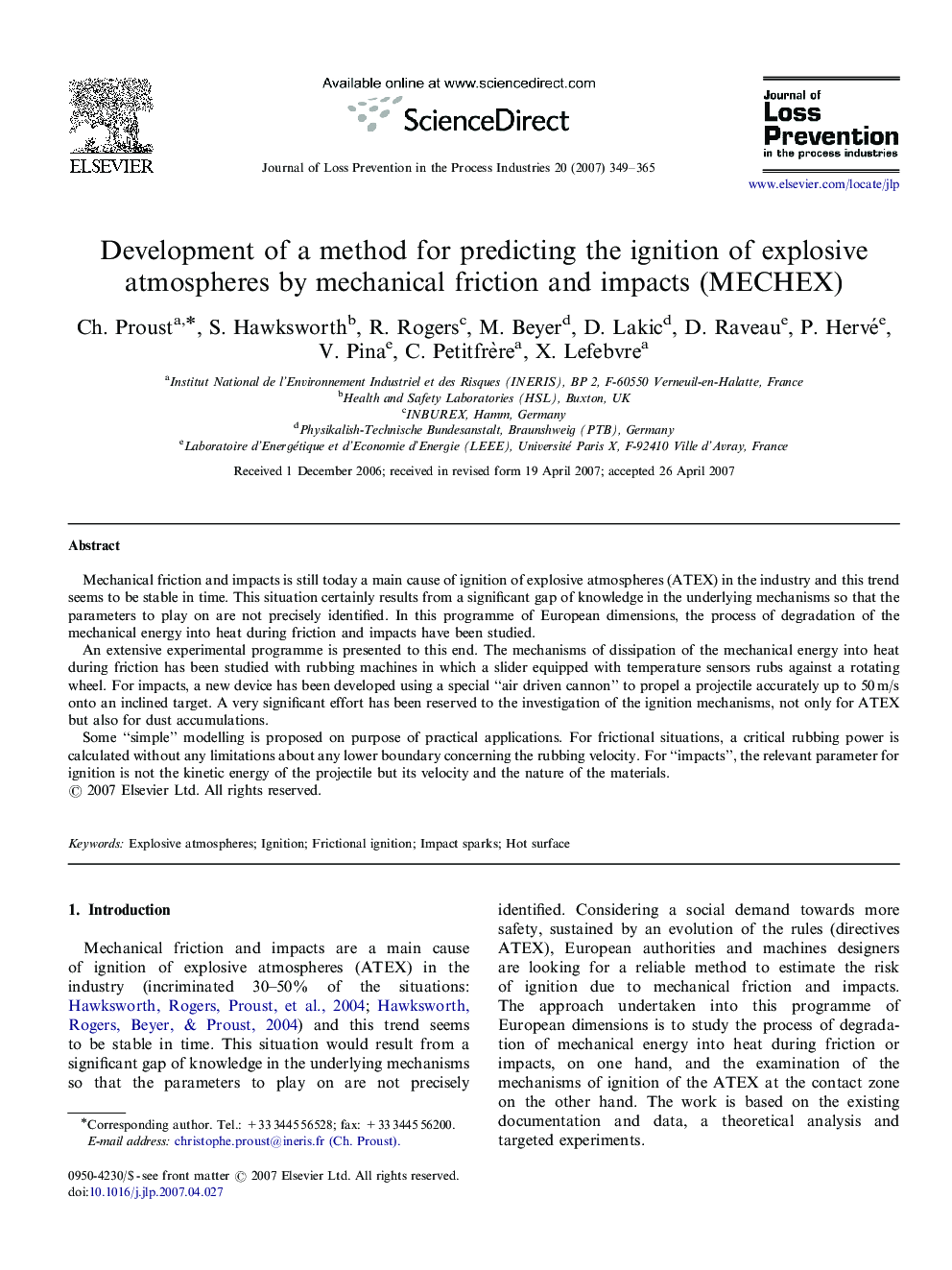| کد مقاله | کد نشریه | سال انتشار | مقاله انگلیسی | نسخه تمام متن |
|---|---|---|---|---|
| 586632 | 1453282 | 2007 | 17 صفحه PDF | دانلود رایگان |

Mechanical friction and impacts is still today a main cause of ignition of explosive atmospheres (ATEX) in the industry and this trend seems to be stable in time. This situation certainly results from a significant gap of knowledge in the underlying mechanisms so that the parameters to play on are not precisely identified. In this programme of European dimensions, the process of degradation of the mechanical energy into heat during friction and impacts have been studied.An extensive experimental programme is presented to this end. The mechanisms of dissipation of the mechanical energy into heat during friction has been studied with rubbing machines in which a slider equipped with temperature sensors rubs against a rotating wheel. For impacts, a new device has been developed using a special “air driven cannon” to propel a projectile accurately up to 50 m/s onto an inclined target. A very significant effort has been reserved to the investigation of the ignition mechanisms, not only for ATEX but also for dust accumulations.Some “simple” modelling is proposed on purpose of practical applications. For frictional situations, a critical rubbing power is calculated without any limitations about any lower boundary concerning the rubbing velocity. For “impacts”, the relevant parameter for ignition is not the kinetic energy of the projectile but its velocity and the nature of the materials.
Journal: Journal of Loss Prevention in the Process Industries - Volume 20, Issues 4–6, July–November 2007, Pages 349–365